Esquiar en POWDER y en hielo no podría ser más diferente. El POWDER es suave y indulgente, ofreciéndote un deslizamiento suave y flotante. El hielo, por otro lado, es duro y resbaladizo, exigiendo bordes afilados y movimientos precisos. Pero aquí está la buena noticia: con las técnicas y el equipo adecuados, puedes manejar ambos como un profesional.
"Conclusiones clave":
- "POWDER: Mantente ligero, desplaza el peso ligeramente hacia atrás y usa giros amplios y fluidos. Equipos como Snowfeet POWDER Skiboards (99 cm) te ayudan a mantenerte sobre la nieve."
- "Hielo: Mantén tu peso centrado, usa giros afilados y controlados, y confía en un control firme de los bordes. Snowfeet Skiskates (44 cm) o Skiblades (65 cm) ofrecen un agarre excelente y transiciones rápidas."
"El equipo Snowfeet es compacto, fácil de usar y funciona para ambos terrenos. Ya sea que estés cruzando POWDER o navegando por pendientes heladas, mantendrás el control con una sola configuración. Vamos a desglosarlo."
"Cómo esquiar - Condiciones variables de nieve"
"POWDER vs. Hielo: Qué los hace diferentes"
"El POWDER y el hielo son como el día y la noche cuando se trata de esquiar. Cada uno exige un enfoque único, desde cómo te mueves hasta el equipo que usas. Vamos a desglosarlo."
"Qué hace diferente a la nieve POWDER"
"La nieve POWDER es esa cosa ligera y esponjosa con la que sueñan los esquiadores. Se forma en condiciones frías y secas y se siente casi ingrávida bajo tus esquís. Deslizarse por el POWDER es suave y indulgente, lo que lo convierte en el favorito de los principiantes. Además, es un entrenamiento brutal: ¡tus piernas te lo agradecerán después!"
"Pero aquí está el truco: los esquís largos tradicionales pueden tener problemas en POWDER profundo. Tienden a hundirse con la punta primero, lo que interrumpe tu fluidez. Ahí es donde los Snowfeet POWDER Skiboards son muy útiles. Su diseño más corto y ancho te mantiene flotando sobre la nieve y te permite hacer giros rápidos y fáciles. El POWDER puede parecer un sueño, pero las condiciones heladas? Esa es otra historia completamente diferente."
"Por qué las condiciones heladas son más difíciles"
"El hielo ocurre cuando la nieve se derrite y vuelve a congelarse, creando una superficie resbaladiza y dura como una roca. Y seamos honestos: no es divertido. Según Ski Barn Durango:"
"El hielo presenta un desafío serio porque la superficie dura y resbaladiza hace que sea casi imposible tallar o girar como lo harías en nieve más blanda. Los bordes de los esquís o snowboard a menudo se deslizan en lugar de agarrar, lo que dificulta mantener el control." – Ski Barn Durango
En el hielo, cada movimiento cuenta. Tienes que ser preciso, equilibrado y estar listo para que tus cantos resbalen. Girar y controlar la velocidad no es broma en esta superficie.
Aquí es donde Snowfeet Skiskates and Skiblades brillan. Su diseño compacto te da un control de canto a canto rapidísimo, facilitando manejar esos puntos resbaladizos. Ya sea que estés enfrentando POWDER suave o pendientes heladas, el equipo Snowfeet está hecho para todo.
Cómo esquiar en POWDER vs. hielo
Esquiar en POWDER y enfrentarse a pendientes heladas son dos cosas muy diferentes. Las técnicas que te hacen sentir como un profesional en nieve profunda pueden dejarte luchando en hielo. Vamos a desglosar cómo manejar cada una.
Cómo esquiar en nieve POWDER
Esquiar en POWDER se trata de mantenerse ligero y flotar sobre la nieve. Para lograrlo, desplaza ligeramente tu peso hacia atrás mientras mantienes una postura centrada. Esto te ayuda a hacer giros suaves y sin esfuerzo sin quedarte atrapado.
Mantén una postura más amplia, aproximadamente al ancho de los hombros. Esto mejora tu equilibrio y distribuye tu peso de manera uniforme, lo cual es clave cuando deslizas por nieve profunda. Al girar, opta por movimientos amplios y barridos. Olvídate de clavar demasiado los cantos; en POWDER, todo es cuestión de fluidez y ritmo.
Si estás usando esquís tradicionales, podrías encontrarte con la punta hundiéndose en la nieve. Ahí es donde entran los Snowfeet* POWDER Skiboards. Su longitud más corta (99 cm, o aproximadamente 39 pulgadas) y diseño más ancho facilitan mantenerse sobre la nieve, incluso para principiantes. Es como tener un código de trucos para los días de POWDER.
Para controlar tu velocidad, concéntrate en moldear tus giros. Los giros amplios y barridos naturalmente te frenan, así que no hay necesidad de clavar agresivamente como lo harías en pistas preparadas. Esquiar en POWDER se trata de suavidad y control, no de movimientos bruscos y repentinos.
Mientras que esquiar en POWDER se trata de fluidez, las pendientes heladas exigen un enfoque más calculado y preciso.
Cómo esquiar en pendientes heladas
Las condiciones heladas requieren un control de filo afilado y una postura firme. Mantén tu peso centrado sobre tus esquís, distribuyendo la presión de manera uniforme en ambos pies. Incluso un ligero desequilibrio puede hacer que te deslices. Flexiona un poco las rodillas para absorber los baches y mantener la estabilidad.
Para los giros, piensa en movimientos cortos y deliberados. Comienza cada giro comprometiendo firmemente los cantos, luego afloja al terminar. Este método te mantiene en control y evita derrapes en superficies resbaladizas.
Los Snowfeet* Skiblades y Skiskates brillan en terreno helado. Su tamaño compacto permite transiciones rápidas de canto a canto, dándote la palanca que necesitas para adaptarte al instante. Es como tener un auto deportivo bajo tus pies: sensible y preciso.
Mantén la parte superior del cuerpo estable y deja que las piernas hagan el trabajo. Evita grandes movimientos de brazos o inclinarte demasiado en cualquier dirección; ambos pueden desequilibrarte. En el hielo, se trata de mantener la compostura y ser deliberado.
Para controlar tu velocidad, confía en el compromiso constante de los cantos. A diferencia del powder, donde la nieve misma ayuda a frenar, las pistas heladas requieren giros frecuentes y controlados para mantener todo bajo control.
El equipo Snowfeet* hace que cambiar entre powder y hielo sea muy fácil, ofreciendo la versatilidad que necesitas para cualquier condición, todo en una configuración elegante.
sbb-itb-17ade95
Qué equipo Snowfeet* usar para cada condición
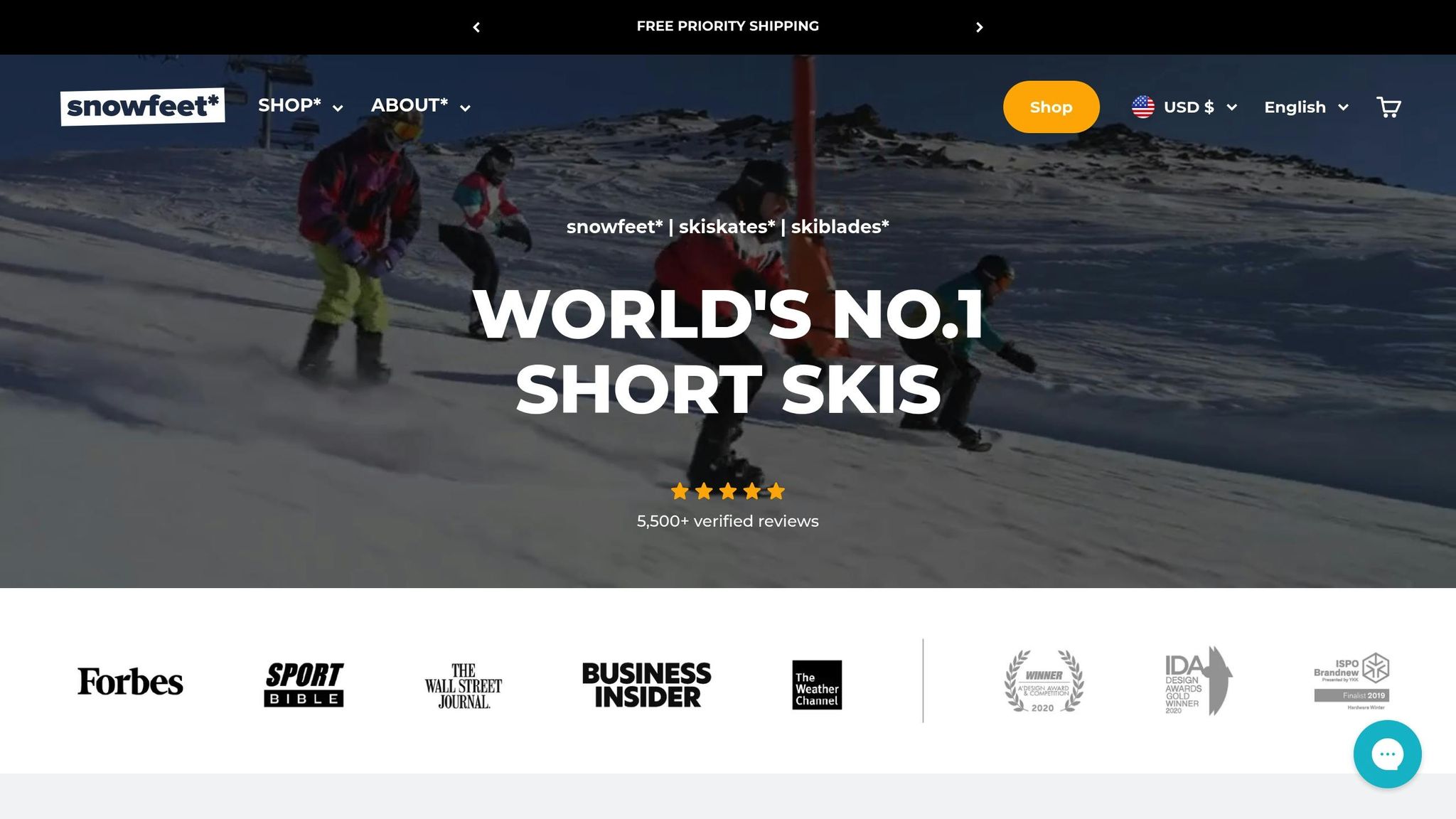
Elegir el equipo adecuado puede hacer o deshacer tu día en las pistas, especialmente cuando cambias entre powder y hielo. Snowfeet* ofrece opciones especializadas que facilitan la adaptación, a diferencia de los esquís tradicionales que a menudo requieren configuraciones separadas.
El mejor equipo Snowfeet* para powder
Para esos días soñados de powder, los skiboards Snowfeet POWDER (99 cm) son tu mejor opción. Con unos 39 pulgadas de largo, están diseñados para deslizarse sin esfuerzo sobre nieve profunda. Gracias a su diseño más ancho, tu peso se distribuye de manera más uniforme, por lo que no te hundirás como con los esquís tradicionales. Esto significa menos energía desperdiciada y más tiempo disfrutando esos giros suaves y fluidos.
Lo que hace que el modelo POWDER destaque es su capacidad para manejar la flexión constante y los cambios de presión que vienen con las condiciones variables de powder. Ya sea que estés tallando en nieve ligera y esponjosa o enfrentando nieve más pesada y húmeda, estos skiboards te cubren. En $675, no solo se trata de rendimiento, también son compactos y portátiles, una gran ventaja frente a cargar con esquís voluminosos de 6 pies.
Y aquí está la clave: no son solo especialistas en powder. Su diseño facilita los ajustes a mitad del día, para que puedas mantenerte flexible a medida que las condiciones cambian.
El mejor equipo Snowfeet* para hielo
Cuando las pistas se vuelven heladas y se siente más como patinar que esquiar, necesitas un equipo que responda rápido. Ahí es donde entran los Snowfeet Skiskates (44 cm) y los Skiblades (65 cm).
Los Skiskates de 44 cm se centran en la agilidad, ofreciéndote transiciones de canto ultrarrápidas para un control afilado y preciso. Por otro lado, los Skiblades de 65 cm logran un equilibrio entre estabilidad y maniobrabilidad rápida, gracias a su construcción sólida de núcleo de madera ajustable. Ambas opciones concentran tu peso para un agarre potente en hielo compacto, algo que los esquís más largos a menudo no logran.
Ambos modelos cuentan con cantos afilados y de alta calidad diseñados para penetrar superficies heladas, dándote la confianza para enfrentar incluso las pistas más resbaladizas. Los Skiskates tienen un precio de $575, mientras que los Skiblades vienen en $635 - ambas son inversiones sólidas para manejar condiciones desafiantes de montaña.
¿Y la mejor parte? Ya sea que estés esquiando en POWDER o hielo, el equipo Snowfeet* funciona perfectamente con tus botas de invierno existentes. Esto significa que puedes adaptarte al instante mientras la montaña te presenta diferentes condiciones.
Con estas opciones personalizadas, estarás listo para ajustar tu postura y técnica a lo que el día traiga. Snowfeet* facilita mantener el control, sin importar el terreno.
Cambiar entre POWDER y hielo durante tu día de esquí
Las condiciones de montaña pueden cambiar en un abrir y cerrar de ojos. Un momento estás deslizándote por POWDER suave, y al siguiente, navegando sobre hielo duro. Para los esquiadores tradicionales, este cambio puede ser un dolor de cabeza: el equipo perfecto para una condición puede sentirse torpe o ineficaz en otra. Pero con los productos Snowfeet*, esas transiciones se convierten en parte de la diversión. En lugar de luchar contra el terreno, puedes abrazarlo, ajustando tanto tu técnica como tu equipo a medida que avanza el día.
Ajustando tu postura y movimientos
Cambiar de POWDER a hielo requiere adaptaciones rápidas en cómo esquías. Todo comienza leyendo la nieve y ajustando tu postura. POWDER exige una posición relajada y centrada, permitiendo que tus skiboards Snowfeet* floten sin esfuerzo. Tus giros deben ser suaves y fluidos, con ajustes ligeros de presión para mantener la naturalidad.
Pero cuando te encuentres con un parche de hielo, es momento de activar esos cantos. Baja tu centro de gravedad doblando más las rodillas y concéntrate en giros afilados y controlados. En lugar de los movimientos amplios y barridos que usabas en POWDER, apunta a cambios de canto rápidos y precisos para mantener el agarre y la estabilidad.
Gracias al diseño compacto de Snowfeet*, estas transiciones se sienten intuitivas. La longitud más corta facilita cambiar de canto al instante, para que no estés luchando con tu equipo. En POWDER, puedes disfrutar de giros largos y elegantes, mientras que en hielo, movimientos más cortos y deliberados te mantienen en control. Se trata de dejar que el equipo trabaje contigo, no en tu contra.
Cómo Snowfeet* Maneja Diferentes Terrenos
A diferencia de los equipos tradicionales que podrían hacerte cargar múltiples pares de esquís, Snowfeet* está diseñado para manejarlo todo: POWDER, hielo y todo lo demás. Este enfoque de un solo equipo no solo te ahorra dinero, sino que también elimina la molestia de cambiar de equipo a mitad del día.
Toma como ejemplo el Snowfeet POWDER (99 cm, o aproximadamente 39 pulgadas). Aunque su nombre sugiere que está hecho para nieve profunda, esta tabla también funciona maravillosamente en pistas preparadas. Cuando la nieve se vuelve helada, la misma tabla que flotaba sin esfuerzo por el POWDER puede clavarse en el hardpack con confianza. Ese tipo de versatilidad es algo que los esquís tradicionales más largos a menudo luchan por ofrecer.
El tamaño compacto de los productos Snowfeet* es un cambio radical. Con esquís más largos, podrías encontrar las puntas en POWDER mientras las colas están en hielo, creando un viaje impredecible. Snowfeet* mantiene tus puntos de contacto más juntos, ofreciendo un rendimiento consistente sin importar las condiciones.
Esta fiabilidad es especialmente útil en terrenos de backcountry, donde puedes encontrar desde hardpack barrido por el viento en crestas hasta POWDER intacto en cuencas protegidas, todo en la misma bajada. En lugar de evitar secciones difíciles porque tu equipo no está a la altura, Snowfeet* te da la confianza para enfrentarlo todo.
Conclusión: Esquiando Ambos Terrenos con Snowfeet*
No necesitas un montón de equipo ni comprometer el rendimiento para dominar tanto el POWDER como las pendientes heladas. Snowfeet* facilita enfrentar ambos terrenos con un solo equipo simple y portátil.
Con Snowfeet*, obtienes lo mejor de ambos mundos. Manejan transiciones rápidas de canto en hielo como un profesional y se deslizan sin esfuerzo por el POWDER, permitiéndote adaptarte naturalmente a las condiciones cambiantes. Ya sea que estés cruzando nieve fresca con el Snowfeet POWDER (99 cm) o tallando giros cerrados en hielo con el compacto Snowfeet PRO (50 cm), este equipo trabaja contigo, no contra ti.
Y hablemos de portabilidad. Mientras que los esquís tradicionales pueden sentirse como cargar pequeños árboles, Snowfeet* se deslizan directamente en una mochila. Eso significa que puedes acceder fácilmente a terrenos que están fuera del alcance de equipos más voluminosos, todo sin gastar una fortuna en comparación con el equipo de esquí tradicional.
Snowfeet* está cambiando las reglas del juego para los deportes de invierno. Estos esquís más pequeños demuestran que no necesitas tamaño para disfrutar de una experiencia versátil y emocionante en la montaña. Desde crestas azotadas por el viento hasta cuencas de POWDER intactas, Snowfeet* te da la confianza para enfrentar lo que la montaña te lance, todo con un equipo ligero y fácil de usar.
La montaña te espera. Con Snowfeet*, estás listo para enfrentarlo todo con control y facilidad.
Preguntas frecuentes
¿En qué se adaptan mejor los productos Snowfeet para condiciones de POWDER y hielo en comparación con esquís y snowboards tradicionales?
El equipo Snowfeet se trata de versatilidad, ya sea que estés deslizándote por POWDER o enfrentando pendientes heladas. Gracias a su diseño compacto y ligero, son más fáciles de manejar y mucho más ágiles en comparación con esquís o snowboards tradicionales. Esto los convierte en una gran elección para terrenos difíciles, como espacios estrechos, áreas irregulares o pendientes empinadas y heladas. Además, las transiciones se sienten más suaves, dándote mejor control cuando más importa.
Lo que distingue a Snowfeet es lo bien que se adaptan a diferentes condiciones. En senderos preparados, son muy fáciles de maniobrar. En zonas heladas, ofrecen un agarre y precisión excelentes, ayudándote a mantener la estabilidad. Y cuando se trata de POWDER, su construcción ligera te da esa sensación divertida y flotante, sin el volumen del equipo estándar. Si buscas un equipo que combine rendimiento todo terreno con conveniencia, Snowfeet es tu mejor opción.
¿Cómo puedo ajustar mi técnica de esquí para condiciones de POWDER y hielo al usar el equipo Snowfeet?
Para sacar el máximo provecho de tu equipo Snowfeet, todo se trata de ajustar tu técnica para que coincida con el terreno. En POWDER, mantén tu postura centrada, con las rodillas ligeramente dobladas sobre las botas. Los giros suaves en forma de media luna son tus mejores aliados aquí: te mantendrán en control y te ayudarán a flotar sin esfuerzo sobre la nieve. En pendientes heladas, el juego cambia. Concéntrate en enganchar los cantos guiando con las piernas y mantén giros más cortos y precisos para conservar el agarre y la estabilidad.
¿Qué hace que Snowfeet destaque? Son ligeros, compactos e increíblemente fáciles de manejar. A diferencia de los esquís o snowboards tradicionales, su diseño ofrece más maniobrabilidad, dándote la confianza para enfrentar desde POWDER suave y esponjoso hasta senderos firmes y helados. Se trata de versatilidad y control, sin importar las condiciones.
¿Puedo usar el equipo Snowfeet con botas de invierno normales y cómo funciona en diferentes tipos de terreno?
Sí, el equipo Snowfeet funciona con la mayoría de botas estándar de invierno, botas de senderismo y botas de snowboard, siempre que ofrezcan soporte sólido para el tobillo, un ajuste seguro y sean tanto impermeables como aislantes. Esto hace que el equipo Snowfeet sea mucho más fácil de usar que las botas de esquí tradicionales, que a menudo requieren fijaciones específicas y pueden sentirse torpes.
Con las botas adecuadas, el equipo Snowfeet ofrece gran estabilidad y control en diferentes terrenos, ya sea que estés deslizándote por POWDER fresco o navegando por parches helados. Esta versatilidad hace que Snowfeet sea una opción fantástica para esquiadores y snowboarders que buscan un equipo ligero, conveniente y de alto rendimiento.
Entradas relacionadas del blog
- La diferencia en la sensación de esquiar entre nieve natural y artificial
- Cómo adaptar tu técnica de esquí para nieve primaveral húmeda y pesada
- Los mejores esquís de freestyle para POWDER: opciones divertidas y versátiles
- Cómo esquiar de forma segura en nieve variable: costra, POWDER y todo lo demás







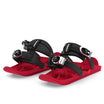
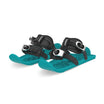












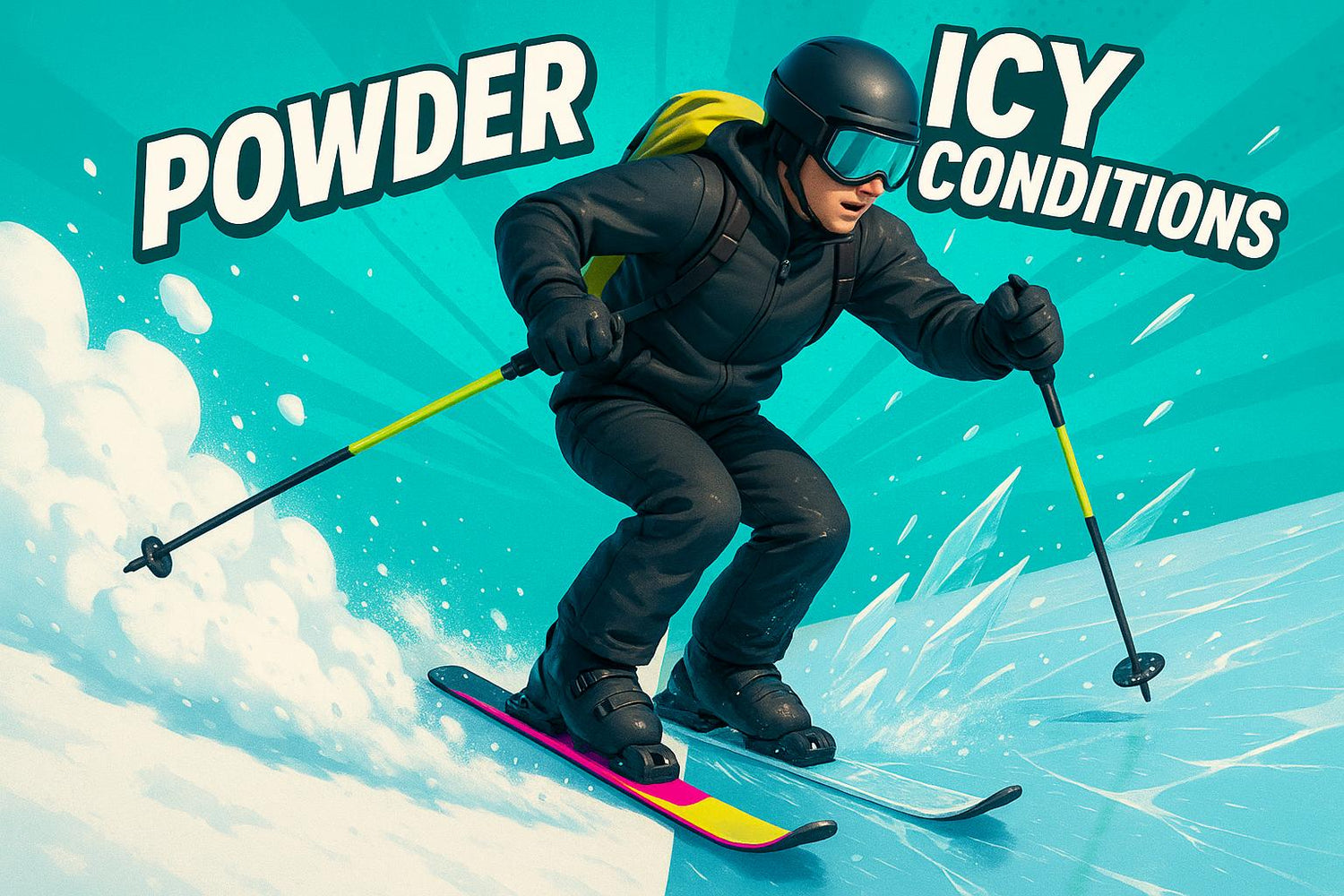






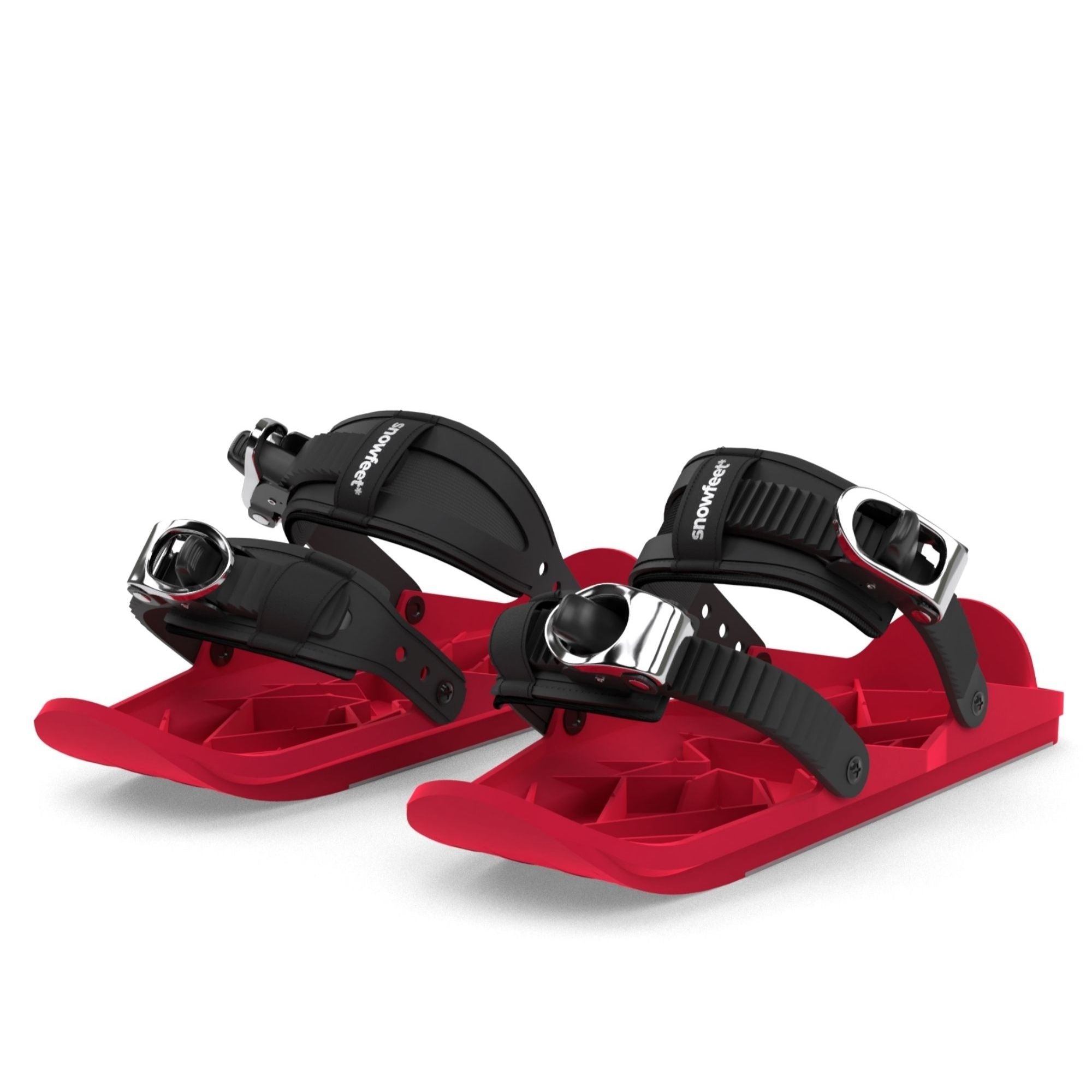
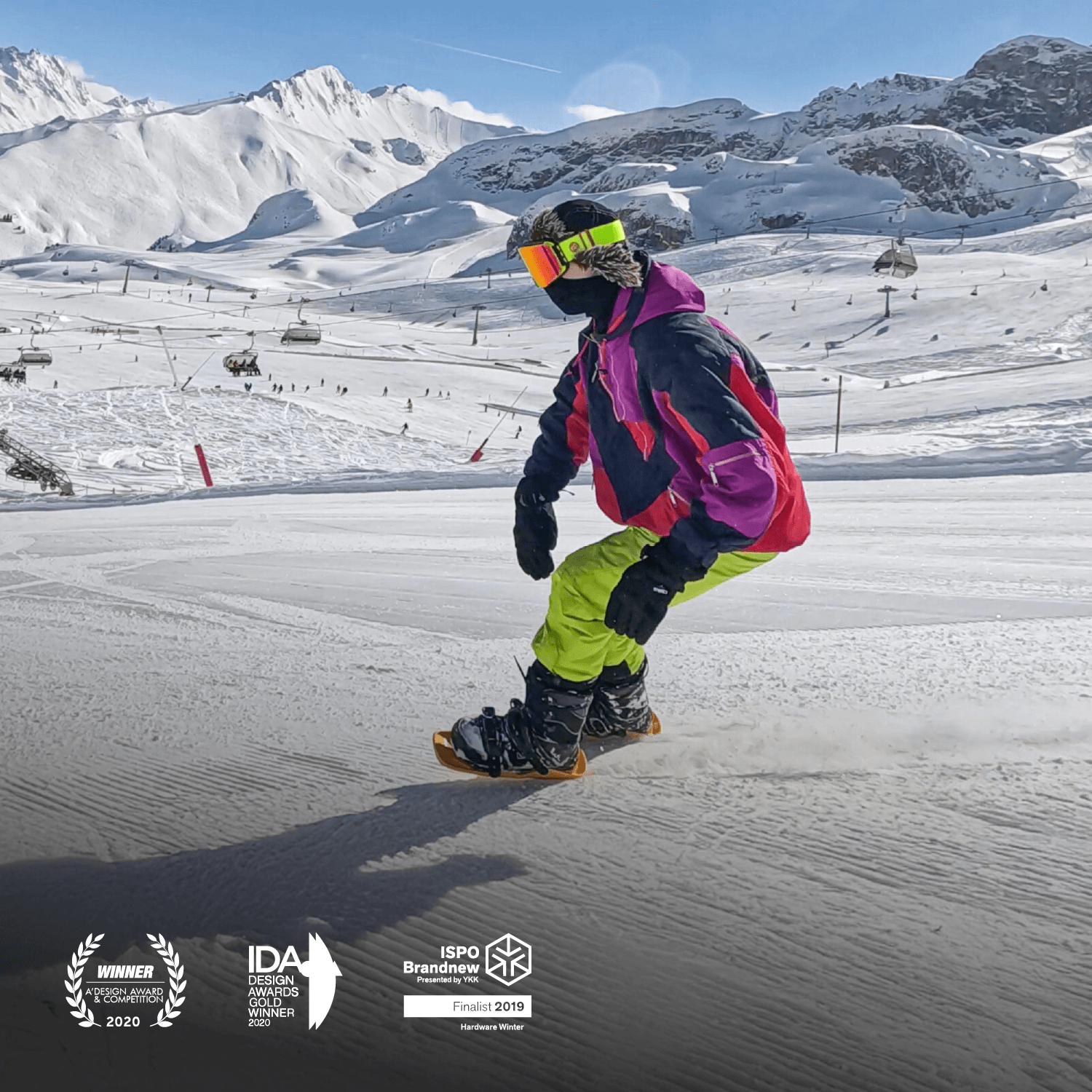




Deja un comentario
Este sitio está protegido por hCaptcha y se aplican la Política de privacidad de hCaptcha y los Términos del servicio.